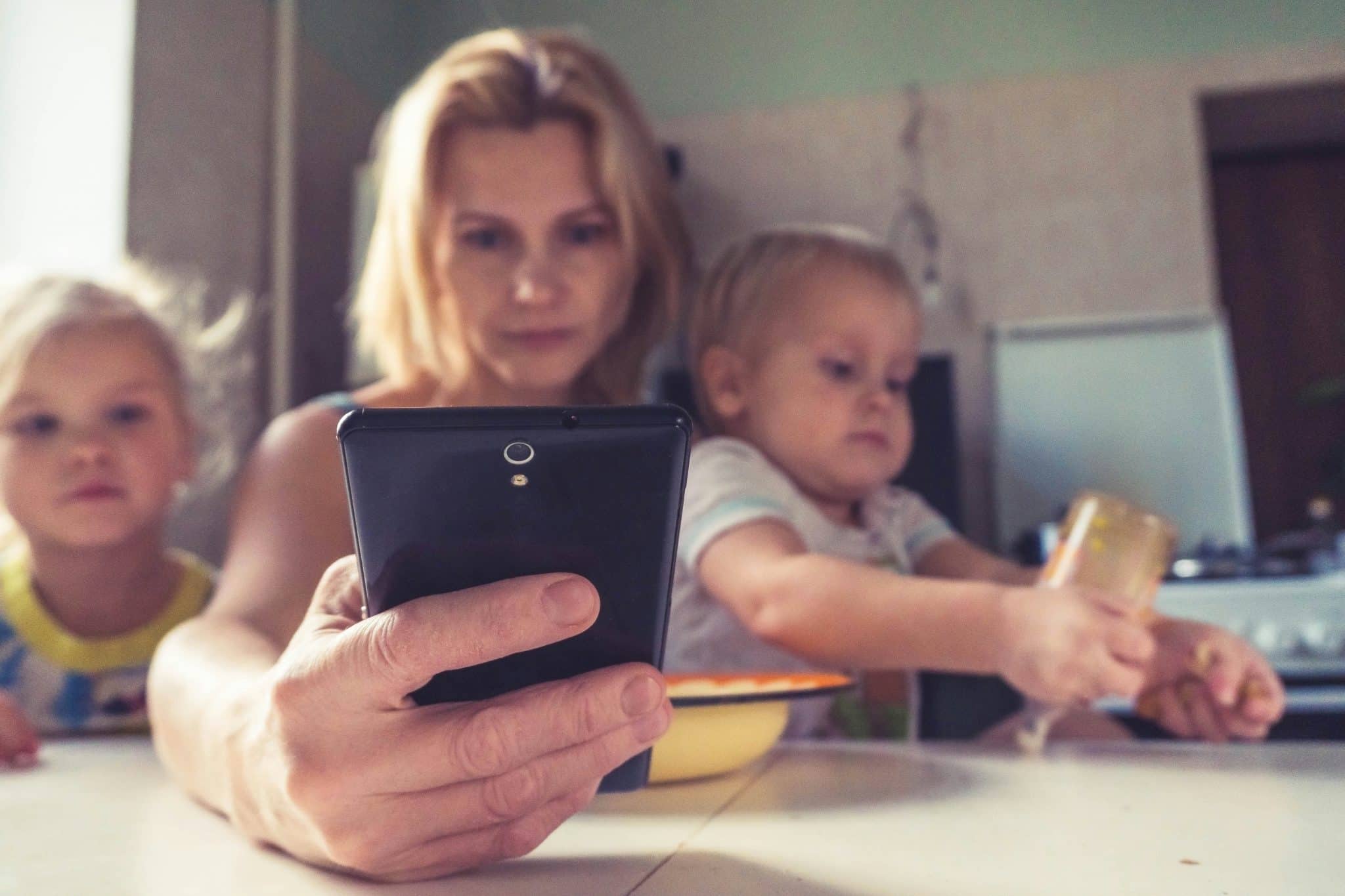This Is How Experts Navigate Digital Overload

Digital overload: we’ve all felt it at one point or another.
Between juggling the ping of constant work notifications, the churn of the disastrous news cycle, the pull of social media’s endless scroll, and the need to update your five productivity platforms, your mind is likely in a constant buzzing state of stress.
The resulting overwhelm makes it hard to concentrate, as you feel decision fatigue, productivity freefall, and rising burnout as you constantly feel the need to be “on” 24/7.
However, with the help of expert-backed strategies and actionable solutions, you can find a way to turn “off,” beat digital overwhelm, and actually rest your mind so you can reclaim your well-being and ability to focus. And with tools like the Freedom app, it’s easier than ever to put these strategies to use.

Photo by Anna Tarazevich on Pexels.
Why We’re Overloaded: What the Experts Say
Digital overload is more than “too much screen time;” rather, it’s about suffering from fragmented attention being pulled into too many directions by various digital platforms. Productivity expert Cal Newport calls this method of constant task-switching and messaging the “hyperactive hive mind,” which erodes our ability to focus and accomplish deep work.
Meanwhile, Dr. Gloria Mark, author of Attention Span: A Groundbreaking Way to Restore Balance, Happiness and Productivity, found the average person switches their screen every 47 seconds. As we pull our focus away from meaningful work, this creates a cognitive cost that increases mental fatigue at faster rates.
Distraction isn’t just a result of tech user design to keep us hooked. According to Nir Eyal, author of Indistractable, it’s often an emotional response to discomfort. Whether we are uncomfortable waiting for our friend to meet us at the bar, or want to procrastinate tackling a huge work project, many of us turn to our phones to escape the uncomfortable present moment.
Author Alex Soojung-Kimg Pang knows that many digital tools are fighting for our attention and swallowing up our time, which results in hindered productivity, creativity, and overall well being. He argues in his book Rest: WhyYou Get More Done When You Work Less that our devices even distract us from the most important thing: rest and leisure.
While a digital detox is a great moment to reset, combatting digital overload requires a lifestyle change. This means it’s time to set up intentional systems that align with how we truly think, feel, work, and rest.
Strategy 1: Audit and Reduce Your Tech Stack
The first step to manage digital overload is to assess the tools you currently use. Let’s start with work: many professionals juggle over 10 digital tools each day, including Slack, Zoom, Google Drive, Trello, Notion, email, text, and more. However, some of these tools create more noise than productivity for you.
Cal Newport suggests a “digital declutter”. Ask yourself, Which of these actually support my goals? Remove redundant apps, consolidate platforms, and ensure you communicate these new boundaries with your team.
Pro-tip: When you want to silence low-priority tools during focus sessions, the digital wellness app Freedom can help you stay on track. Create a customized blocklist of non-essential apps you don’t want to check, whether it’s Slack outside of your work hours, or ClickUp on the weekends.
Strategy 2: Reclaim Your Attention with Time-Boxing + Scheduled Breaks
Do you find yourself clicking on almost every notification you receive? Stop falling for the bait!
Disable your notifications on as many apps as possible, and use Nir Eyal’s strategy of timeboxing: scheduling every part of your day, including breaks and leisure. This strategy can empower you to remain focused and avoid the spiral of guilt you feel after “wasting time” online.
Here’s an example schedule:
- 10 am-12 pm: Pomodoro Sessions for Deep Work.
- 12-1 pm: Lunch. Leave this time period open for socializing, guilt-free scrolling, or enjoying a good book.
- 1-1:30 pm: Check and answer emails
- 1:30-3:30 pm: Pomodoro Sessions for Deep Work.
- 3:30-3:50 pm: 20 minute break to read the news.
- 3:50-5:00 pm: Wrap up important tasks and schedule your next day before you head home.
Pro-tip: Use Freedom’s Recurring Sessions, which allows you to automate focus blocks on a daily or weekly basis so you can protect your time and attention during your most productive hours.
Strategy 3: Create Zones of Digital Hygiene
In your home, you likely have designated spaces for sleeping and eating. Similarly, we can create tech zones to protect our mental bandwidth. Keep work to the office or a certain corner of the house or TV in the living room. Gloria Mark suggests taking it a step further by creating “digital boundaries” by identifying times and spaces where tech is intentionally absent.
Try a few of these ideas to tackle digital overload:
- A phone-free dining table. Use the time to chat with your roommates or simply be present with your meal.
- Slack-free weekend mornings. Work can wait.
- A screen-free bedroom after 9pm. Wind down by engaging in gentle stretches, enjoying a spa-like nighttime routine, writing in your journal, or reading a book.
Pro-tip: To make sure you stick to your tech-free zones, Freedom’s Locked Mode will prevent you from canceling your block session and exiting your non-negotiable device-free downtime.
Strategy 4: Tame the Endless Churn of News & Social Media
Our brains were never meant to absorb every global tragedy in real time. Doomscrolling disastrous headlines, trolling comment sections, and the constant thrum of content can leave us feeling anxious, helpless, and drained. To stay up-to-date but not overwhelmed with the news, try these tips:
- Replace infinite scroll with newsletters from your favorite publications.
- Use curated news digests or RSS feeds instead of algorithmic timelines.
- Read a non-fiction book that takes a deep dive on a hot-button news topic.
Similarly, social media can suck us into a digital overload of news, entertaining videos, or tempting lifestyle content. One of Nir Eyal’s suggestions to beat distraction is to “hack back” external triggers. Here’s how you can take back your smartphone in four steps to minimize distracting social media sites.
- Remove apps you no longer need.
- Remove apps that you like, but can use on your computer instead.
- Rearrange the remaining apps on your phone to reduce visual clutter.
- Minimize or delete notifications for each app.
Pro Tip: With Freedom, you can create customized blocklists for social media and news sites that are scheduled automatically to keep you in the present moment.
Strategy 5: Build in True Recovery, Not Just Escape
Many of us confuse escapism with self-care. Even though it may feel like we’re underwinding when we binge-watch Netflix or endlessly scroll, we’re actually still demanding a lot of brainpower to engage with these.
Instead of passive recovery, embrace what Alex Soojung-Kim Pang calls “deliberate rest.” He found that many successful writers, scientists, and creatives engaged in deep work approximately 4 hours a day, and filled their other hours with meaningful rest and leisure. Here are some examples of deliberate rest:
- Engage in enjoyable hobbies like reading, gardening, or practicing a musical instrument.
- Enjoy a warm bath or shower to unwind after a long day.
- Take a walk in nature to reduce stress and promote relaxation.
- Practice mindfulness, yoga, or meditation to calm the mind.
- Take a nap after lunch or your workday.
- Spend time with friends: at home or out on the town.
Pro-tip: Freedom’s Focus Sounds can set the tone for these pauses—whether it’s ambient nature sounds for a 10-minute breather or lo-fi beats to wind down before bed.

Photo by Pixabay from Pexels.
Intentional Tech Use is the Key to Balanced Wellbeing
In a world where information never sleeps, digital overload is inevitable without boundaries. But as today’s leading thinkers suggest, the goal isn’t to quit tech: it’s to use it deliberately. By reducing tool clutter, protecting your attention, and creating time for real recovery, you can feel clearer, calmer, and more in control.
With Freedom, these strategies become easier to implement. Whether you’re blocking notifications for deep work or taking a true digital pause, Freedom empowers you to reclaim your time and attention on your own terms so you can finally breathe easy.
Written by Lorena Bally


